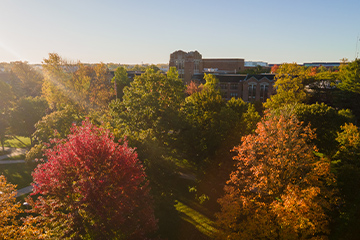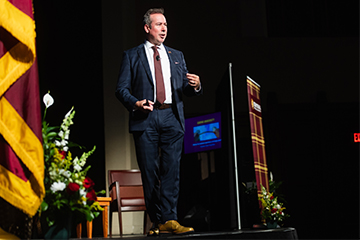Storing leftovers 101
The Q&A you need for fresh, safe meals
Meal-prepping is increasing rapidly in popularity due to its ability to save time, reduce stress about what to eat, and promote healthy eating, all of which are important to college students and working adults. However, when a person meal preps, the majority of food they eat is leftovers, and the longer a food goes before consumption, the more opportunities it has to become exposed to pathogens. Here are some of the most burning questions and answers about how to keep leftovers safe.
Q. What temperature do I need to keep leftovers at?
Leftovers must be kept at 41°F or lower (i.e., refrigerator temperature). Leftovers must be cooled to this temperature within four hours to prevent pathogenic growth.
Q. How can I cool my leftovers down quickly?
Refrigerators are not designed to cool food down quickly, so supplemental quick-cooling methods will likely need to be used before storage in the fridge. These methods include placing food containers in an ice bath and temporarily storing food in a freezer.
Q. What type of container is best for storing leftovers?
There are two main factors to consider when selecting food storage containers. The first is the size/shape of the container and the second is the material. Smaller, more shallow containers help to disperse the heat from the food more quickly compared to larger, deeper ones. Additionally, stainless steel containers are more conducive to quick food cooling than plastic containers.
Q. How long can I keep leftovers?
Leftovers can be kept for up to seven days. Be sure to label leftovers with the date they must be used or thrown out. To calculate the use-by date, start with the date of preparation and add six.
Q. How should I store my leftovers in the fridge?
All food should be stored in the refrigerator based on its minimum internal cooking temperature. Since leftovers have already been cooked, they should be kept on the top shelf of the fridge, along with any produce or other ready-to-eat foods. Any raw seafood, meat, or poultry must be stored below leftovers to prevent cross-contamination.
Q. Do you have any other tips for keeping leftovers safe?
When reheating leftovers, only take out and reheat exactly what you will eat. The more frequently leftovers are reheated and cooled, the greater the temperature abuse they experience, increasing their risk of becoming unsafe.
With this food safety knowledge, we can all jump aboard the meal-prepping bandwagon, creating delicious, safe food that lasts.
The information from this article is from the ServSafe Coursebook, 8th edition.
Samantha Towers is a junior in the dietetics program at Central Michigan University. To learn more about the Nutrition and Dietetics program and course offerings, please contact program director Dr. Najat Yahia at yahia1n@cmich.edu.




